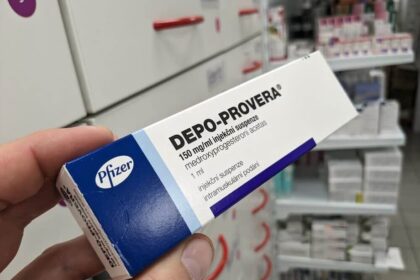Understanding Hidden Medical Conditions on Public Transport
For many Singaporeans, a daily commute on the MRT or bus is a routine part of life. But for thousands of individuals living with hidden medical conditions, these journeys can be fraught with pain, anxiety, and the fear of being misunderstood. Unlike visible disabilities, hidden conditions—such as autoimmune diseases, chronic pain, heart disease, or neurological disorders—often go unnoticed by fellow commuters. This invisibility can make it difficult for those affected to access the support and consideration they need, especially when it comes to something as simple as getting a seat on a crowded train or bus.
- Understanding Hidden Medical Conditions on Public Transport
- What Are Hidden Medical Conditions?
- The “May I Have a Seat Please” Initiative: Origins and Purpose
- Real-Life Experiences: The Human Side of Hidden Conditions
- How the Helping Hand Scheme Expands Support
- Training and Awareness: Building a More Inclusive System
- Challenges: Stigma, Skepticism, and Social Barriers
- Designing for Dignity: The Stories Behind the Lanyard
- Beyond Public Transport: Support at Changi Airport and Other Venues
- International Context: How Does Singapore Compare?
- Looking Ahead: Building a More Caring Commuting Culture
- In Summary
In recent years, Singapore has taken significant steps to address these challenges, launching initiatives like the “May I Have a Seat Please” card and the broader Helping Hand scheme. These efforts aim to foster a more inclusive and compassionate public transport system, but the journey towards true understanding and acceptance is ongoing.
What Are Hidden Medical Conditions?
Hidden or invisible medical conditions refer to health issues that are not immediately apparent to others. These can include:
- Autoimmune diseases (e.g., Sjogren’s syndrome, multiple sclerosis)
- Chronic pain or fatigue syndromes
- Heart disease
- Arthritis
- Neurological disorders (e.g., epilepsy, autism spectrum disorder)
- Conditions requiring ongoing cancer treatment
- Physical injuries or use of prosthetic limbs
- Early-stage pregnancy
People with these conditions may look young and healthy, but standing for long periods or navigating crowded spaces can be extremely challenging. The lack of visible cues often leads to misunderstanding, skepticism, or even ridicule from others.
The “May I Have a Seat Please” Initiative: Origins and Purpose
Launched by the Land Transport Authority (LTA) in 2019, the “May I Have a Seat Please” initiative was designed to help commuters with invisible medical conditions signal their need for a seat without having to explain themselves repeatedly. The program began as a simple sticker and has since expanded to include lanyards and cards for those with long-term conditions, as well as stickers for short-term needs.
Commuters can collect these identifiers for free at passenger service centers in MRT stations, bus interchanges, and selected ticket offices. Importantly, no proof of medical condition is required, reducing barriers for those who may feel self-conscious or fear being judged.
Priscilla Chan, Deputy Group Director (Public Transport) at LTA, explained the rationale behind the initiative:
“Commuters have consistently demonstrated graciousness to the elderly or expectant mothers on public transport. However, there is another group of commuters whose conditions are often hidden and yet they need seats just as much.”
The initiative was inspired by similar programs in cities like London and Tokyo, where visual identifiers have helped bridge the gap between those in need and those able to offer assistance.
Real-Life Experiences: The Human Side of Hidden Conditions
Despite the good intentions behind the “May I Have a Seat Please” card, many users report mixed experiences. Vivien Shiw, a 34-year-old university administrative employee living with Sjogren’s syndrome, vasculitis, and arthritis, describes her daily struggle:
When the pain in her legs becomes unbearable, she sometimes squats in the MRT train or gets off at the next stop just to rest on a bench. Even with the card, she often receives stares rather than offers of help. The only visible sign of her condition is a rash, which most people do not associate with the need for a seat. Her greatest fear is losing her balance and falling.
Similarly, Ms Ratnah Hafizah, who has multiple sclerosis, used to rely on private hire rides to pick up her son from kindergarten, even though it was only one bus stop away. Carrying the card has given her the confidence to take a priority seat without fear of judgment, but the journey to widespread acceptance is ongoing.
For some, the process of obtaining the card itself can be discouraging. A 21-year-old university student, known only as Ms Lim, recounted being laughed at by a passenger service employee when she requested the card, despite presenting medical records for conditions like endometriosis and pelvic congestion syndrome. She eventually received the card, but the experience left her feeling invalidated.
How the Helping Hand Scheme Expands Support
The “May I Have a Seat Please” card is part of the broader Helping Hand scheme, an initiative by the Caring SG Commuters Committee. This committee, comprising ministries, agencies, and public transport operators, aims to create a more inclusive public transport system for all.
Since its inception, the scheme has expanded to include additional identifiers:
- “This is a wheelchair” card: Helps paediatric wheelchair users alert staff and passengers to give way, especially at designated spaces.
- “Please alert me when I am approaching my stop” card: Assists passengers with visual impairments or dementia by prompting others to notify them when nearing their destination.
- Universal Helping Hand card: Allows commuters to indicate specific types of assistance needed, such as directions or help with fare cards.
As of May 2024, LTA reported distributing over 10,600 stickers for short-term conditions and 20,400 cards for long-term conditions. The identifiers are available for free, and no documentation is required, reflecting a trust-based approach that prioritizes dignity and accessibility.
Training and Awareness: Building a More Inclusive System
Recognizing that visual identifiers alone are not enough, Singapore’s public transport operators have invested heavily in staff training. Since 2016, the Enhanced Vocational Licence Training Programme has included modules on commuter inclusivity, with over 10,455 bus captains completing the program. SMRT, one of the major operators, has trained more than 4,500 front-line staff—including station managers, bus captains, and service ambassadors—in inclusive service delivery, often in partnership with social service agencies and special education schools.
Role-play scenarios and hands-on learning help staff develop the sensitivity and skills needed to assist commuters with diverse needs. Over 7,000 SMRT staff are now certified as Caring Commuter Champions, equipped to support passengers with disabilities.
Madam Aileen Goh, a senior assistant station manager at SMRT Trains, shared how her training has empowered her to help unwell passengers and those with dementia:
“I look out for those who need help and have the confidence to assist them, such as by slowly approaching elderly passengers wandering around the station and gently checking in on them.”
Bus captains like Mr Dalvinder Singh of Tower Transit Singapore also note the positive impact of the card:
“Before the cards were introduced, we would usually rely on visual cues or if the commuter approached us first. Now, with the lanyards and cards, I can take the initiative to offer help more confidently and appropriately.”
Challenges: Stigma, Skepticism, and Social Barriers
Despite these advances, many commuters with hidden conditions still face skepticism and social stigma. The most common challenge is the perception that someone who looks young and healthy does not need a seat. This bias can lead to uncomfortable stares, whispered comments, or outright refusal to give up a seat—even when the need is genuine.
Some cardholders report that the initiative has not always worked as intended. Instead of receiving help, they often feel more conspicuous and judged. The lack of visible symptoms makes it difficult for others to empathize, and some commuters are hesitant to offer their seats for fear of being taken advantage of.
Public education remains a key hurdle. While posters and announcements have been placed in prominent locations, changing deep-seated attitudes takes time. As one Channel NewsAsia reporter observed during a day spent wearing the lanyard, most commuters either ignored the card or looked away, unsure whether to offer a seat.
There is also the issue of language and cultural barriers. The card’s message is in English, which may not be understood by all commuters, particularly older individuals or those from non-English-speaking backgrounds.
Designing for Dignity: The Stories Behind the Lanyard
The design of the “May I Have a Seat Please” lanyard is itself a product of community collaboration. The Caring SG Commuters Committee held an art competition, inviting submissions from individuals with disabilities or special needs. The final design incorporates elements from ten different artworks, each reflecting the unique experiences and aspirations of its creator.
For example, Asher, an individual on the autism spectrum, contributed artwork depicting five people forming the shape of an invisible heart, symbolizing the need for empathy and care. Joy, who has Down syndrome and flat foot, shared that her condition is invisible to others, making it difficult to ask for help. Zer Yinn, a young woman with autism, expressed her hopes and dreams through her art, highlighting the importance of acceptance and understanding.
These stories underscore the diversity of hidden conditions and the importance of designing solutions that respect the dignity and individuality of each commuter.
Beyond Public Transport: Support at Changi Airport and Other Venues
The principles of inclusivity are also being extended beyond buses and trains. At Changi Airport, staff are trained to recognize both the “May I Have a Seat Please” lanyard and the Hidden Disabilities Sunflower lanyard—a global symbol for hidden disabilities first launched at Gatwick Airport in England. Since August 2024, over 330 staff members across 15 organizations at Changi Airport have been trained as care ambassadors, equipped to support passengers with invisible disabilities such as autism, ADHD, Down syndrome, or dementia.
Parents of children with autism have praised these efforts. Ms Edwina Fan, whose son Wallace is triggered by loud noises and crowds, described how airport and MRT staff provided special accommodations, from manual immigration counters to early boarding and meal service. On one occasion, MRT staff formed a protective circle around Wallace during a meltdown, shielding him from onlookers and preventing another passenger from filming the incident.
Ms Tiffany Tee, whose son Atkins has autism, recounted how airport staff allowed him to bring a calming toy on board and did not pressure him to make eye contact during security checks. These small acts of understanding have made travel less stressful and encouraged families to venture out more often.
International Context: How Does Singapore Compare?
Singapore’s initiatives are part of a global movement towards greater accessibility and inclusivity in public transport. Similar visual identifier schemes exist in London (the “Please Offer Me a Seat” badge) and Tokyo, where badges for expectant mothers and people with hidden disabilities are common. These programs have shown that while visual cues can help, they must be supported by public education and staff training to be truly effective.
Singapore’s approach—combining visual identifiers, staff training, and public awareness campaigns—reflects best practices from around the world. However, the persistent challenges of stigma and skepticism highlight the need for ongoing efforts to change mindsets and foster a culture of empathy.
Looking Ahead: Building a More Caring Commuting Culture
The expansion of the Helping Hand scheme and the continued investment in staff training signal Singapore’s commitment to making public transport accessible for all. The Caring SG Commuters movement, launched in 2017, aims to build a national culture of care and inclusivity, inviting all Singaporeans to participate.
Transport Minister Chee Hong Tat has emphasized the importance of not hesitating to ask for or offer help. The LTA and its partners continue to seek feedback from commuters and work with social service agencies to refine and expand their initiatives.
Ultimately, the success of these programs depends not just on policies and identifiers, but on the willingness of every commuter to exercise empathy and understanding. As Singapore’s population ages and the prevalence of chronic conditions rises, the need for a caring and inclusive public transport system will only grow.
In Summary
- Hidden medical conditions make public transport challenging for many Singaporeans, despite their outwardly healthy appearance.
- The “May I Have a Seat Please” card and Helping Hand scheme aim to help commuters with invisible conditions access support without stigma.
- Staff training and public awareness are key to the success of these initiatives, but challenges like skepticism and social stigma persist.
- Designing inclusive solutions involves collaboration with the community and respect for individual dignity.
- Efforts to support commuters with hidden conditions are expanding to other venues like Changi Airport, reflecting a broader commitment to accessibility.
- Singapore’s approach aligns with international best practices, but ongoing education and cultural change are needed to build a truly caring commuting culture.












